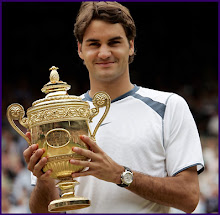WELCOME
Welcome to my Blog.......The best tips on net for tennis. Click here, if VISITING FOR THE FIRST TIME.
Also dont forget to visit my new website WWW.BHARATVERMA.IN
Also dont forget to visit my new website WWW.BHARATVERMA.IN
Support Us
Tuesday, March 20, 2007
Subscribe to:
Post Comments (Atom)


6 comments:
GREAT BLOG BUDDY!!! KEEP IT UP.
terribly well described. even better than the wikipage which links to a page with photos.. n' that means it's really good! in fact, this is one of the best tennis pages overall..
Great page man finally i can now understand the grips. nice work
Great story as for me. It would be great to read a bit more about this theme. Thnx for sharing this data.
Joan Stepsen
New gadgets technology
hello guys, I like your blog is very interesting your subject .... I would like to receive information about this
thanks for the info... now I know how to use those grips... maybe I'll try it out...
Post a Comment